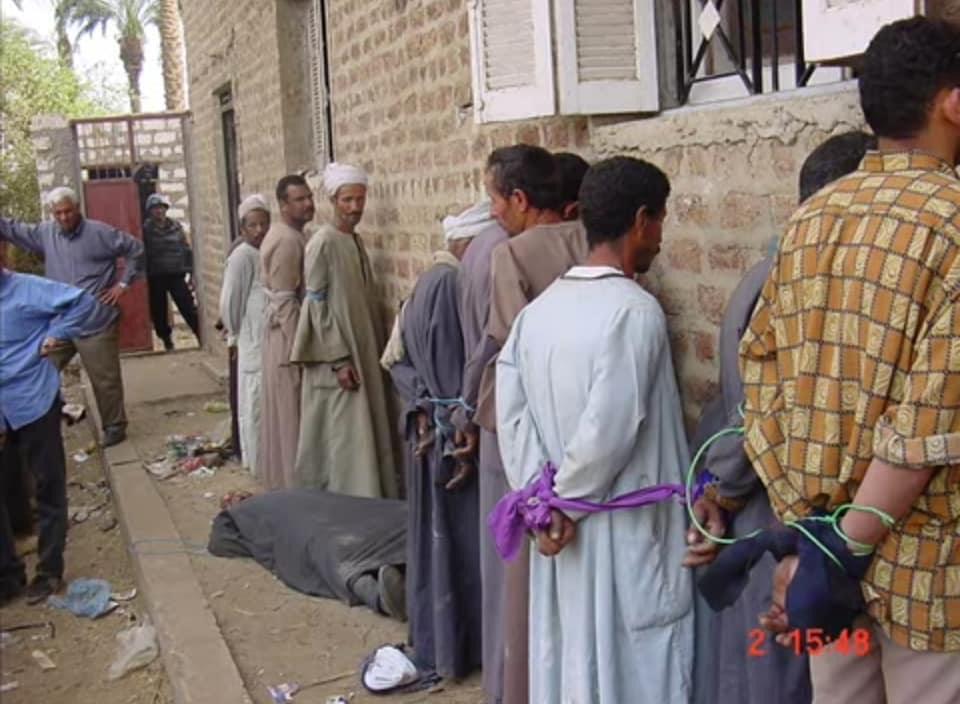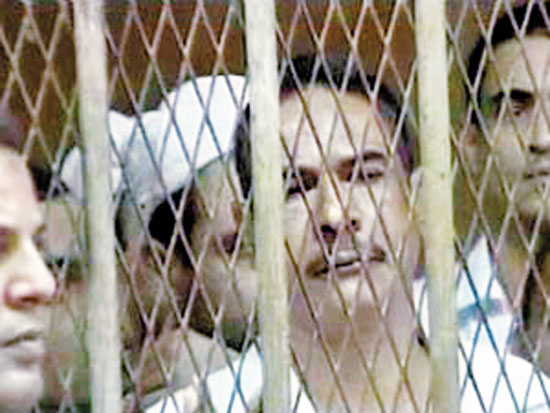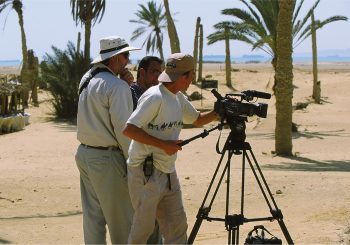Weapons, drugs, and organized crime.
Most minds would imagine Pablo Escobar, the infamous Colombian drug lord notorious for his crimes during the 1980s. The legend of Escobar is forever etched in the annals of history, inspiring shows mainstream like Narcos (2015).
Yet, this is not the Colombian, but rather the Egyptian Escobar’s story.
A gang leader who struck fear in the hearts of Upper Egyptians, a 280 feddan fortress to stash his weapons and drugs, and a police raid that took six days and 6,000 men to end his reign over the region – the legend of Izzat Hanafi is one that will never be forgotten in the annals of Egyptian history.
The Rise of Izzat Hanafi
Much of Izzat Mohamed Hanafi’s early life remains a mystery to the public. He was born in Asyut, Egypt in 1963 as the middle child among four sons, Hassan, Hamdan, and Mamdouh.
His rise, in the early 1990s, came at a turbulent time for Egypt’s domestic security, as the country’s forces attempted to eradicate terrorist movements in Upper Egypt. The state was still recovering from the drawbacks of decades of wars, lacking the capabilities to whiff out terrorists in guerilla-like environments.

As Mamdouh, Hanafi’s eldest brother, recalls it, the Ministry of Interior called on a set of powerful families in Upper Egypt to help eliminate terrorism in designated areas. Hanafi was assigned by the Ministry of Interior to seek and destroy terrorist hideouts in Asyut’s hills and Al-Nakhila Island; the latter would later become Hanafi’s fort.
“Izzat used to visit the Ministry of Interior, to go up and drink tea [with high officials] and leave,” stated his older brother Mamdouh in an interview with Youm7 in 2015, highlighting Izzat’s early days cooperating with the ministry.
After expelling terrorists from Al-Nakhila and the areas surrounding the village, Hanafi began to rule the land with an iron fist, particularly the eastern corner of the island. His dominion over the 280 feddan peninsula aided his rise to power as he utilized the land to produce opium, hashish, and store weapons.
Hanafi’s oldest son, Mahmoud, claims that his family lived in harmony with other families in Al-Nakhila and that the Hanafi family only owned 55 feddan of the land — underscoring rumors of them controlling all of Al-Nakhila were fabricated.

Image Credit: Bab Al Khalq/Al-Nahar Channel
News channel coverages following the seizing of Al-Nakhila revealed Hanafi held children and women hostage, refusing to feed them and threatening their lives. By the 1990s, it was clear that Hanafi had become the Egyptian Security Force’s Frankenstein, an omnipotent villain created by the tools and backing provided to him.
According to locals in Al-Nakhila, he haughtily began to call himself ‘The Island’s Emperor’. It was then that security forces saw that his time needed to come to an end.
The Battle of Al-Nakhila
A violent dispute between the Hanafi family and the neighboring Sabaq family led to the killing of five people in Al-Nakhila, including Izzat’s youngest sibling, Hassan. As the conflict escalated, the Egyptian Armed Forces pounced on the opportunity to raid Al-Nakhila.
With Hanafi’s daunting set of ammunition in mind, the Egyptian forces mobilized more than 3,000 soldiers, and approximately 50 armored vehicles as well as 60 riverboats.


In retaliation, Hanafi and his men metamorphosed the island into a fortress. They built forts across Al-Nakhila, with towers up to five floors high. The island also featured fortified dams that were impenetrable to bullets, as well as underground passages to enable maneuver in and out of the island.
To fight back, Hanafi used the astounding amount of weapons and ammunition he possessed, ranging from pistols and rifles to cannons that could fire as far as seven kilometers. The island’s overlord had butane gas cylinders installed on walls and on the palm trunks, preparing to detonate them if forces entered the premises.
Once his fear materialized and security forces stormed into Hanafi’s territory, the battle had formally ended. Forces arrested 77 gang members, excluding Hanafi, who had attempted to commit suicide by ingesting poison.

The End of an Empire
Following the seizing of Al-Nakhila, the Ministry of Interior collected evidence of Hanafi’s crimes. Besides Hanafi’s large array of weaponry, the ministry confiscated half a tonne of cannabis and 50 kilograms of opium.
Furthermore, around 160 hostages were released from Hanafi’s underground passages, many of them children. The Interior Ministry stated that Al-Nakhila had long been considered a haven for criminals.
The police also reported a single death throughout the entirety of the operation — that of a gang member. However, residents near the skirmish believed that there had been as many as 70 people killed in the fighting.

Hanafi’s legend came to a clear halt when he was sentenced to death for his crimes, with the execution carried out on 18 June 2006. Yet, his legacy lived on: merely a year after his execution, El-Gezira (The Island, 2007) was released in theaters, with the plot heavily inspired by Hanafi’s story.

Perhaps the greatest mystery surrounding Hanafi’s legend is the validity of his death, still at the heart of rumors today.
Mamdouh claims that the family never confirmed the body. He also states that his son, the only individual sent by the family to verify the corpse, believed that the face he had peered at was not Izzat’s. Shortly after the autopsy, police officers buried Izzat, refusing to let his family conduct the burial ceremony.
To add to the Hanafi family’s conspiracy theory, Mamdouh claimed that the police guarded the burial site for 15 days straight following the burial, refusing to let any relative come near his grave.
Hanafi’s story is full to the brim with mysteries and plot holes; his family is also attempting to change the narrative. Decades after his execution, his son, Mahmoud, professed that his father was never a gang leader, that storing weapons and drugs was a norm in the area, and that the Ministry of Interior needed a scapegoat.
“You can’t have the whole area committing a crime and then point the blame on [the Hanafi family] because we are the ones who are known here,” said Mahmoud in a broadcast interview.
Decades later, those who lived during Hanafi’s reign now assert that he was a good man. This is despite the fact that other villagers claimed the opposite at the time of his arrest.
Then again, a question begs itself: would a good man ever need 3,000 soldiers, 50 armored vehicles, and 60 riverboats in order to be reached?







Comments (0)